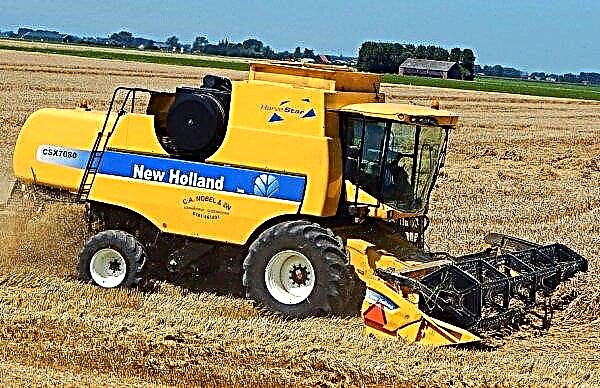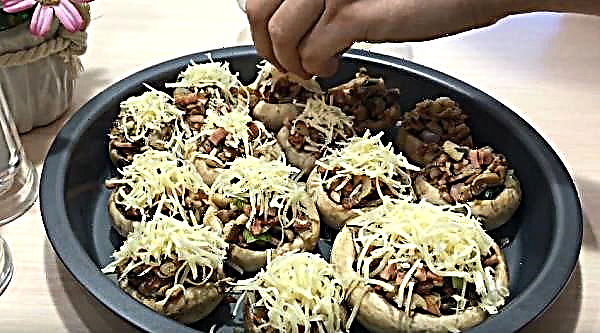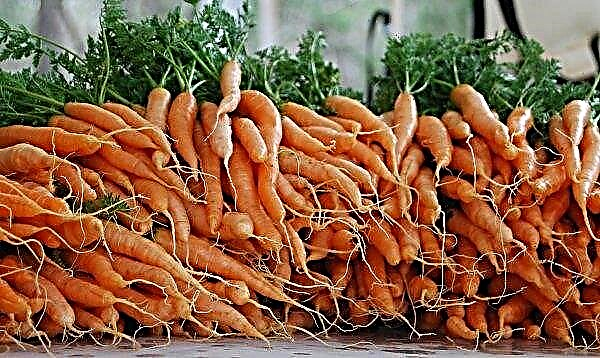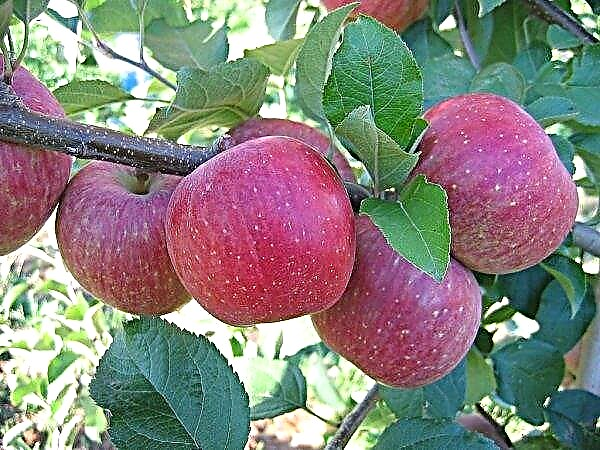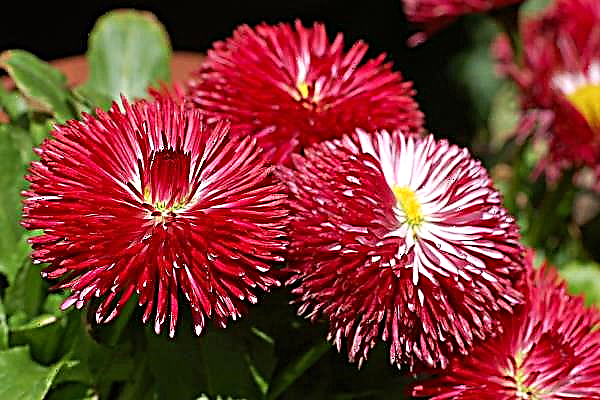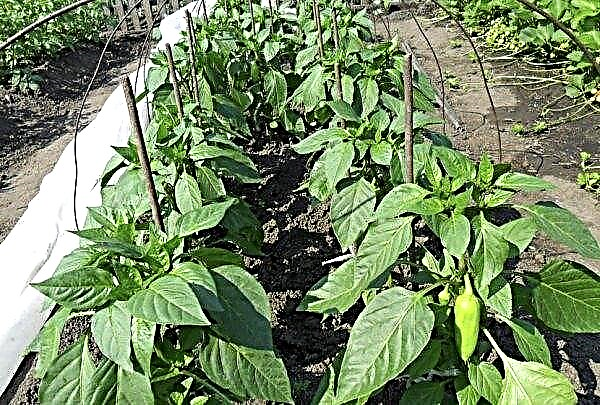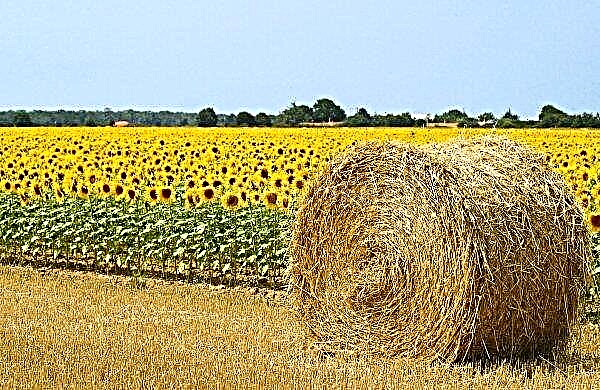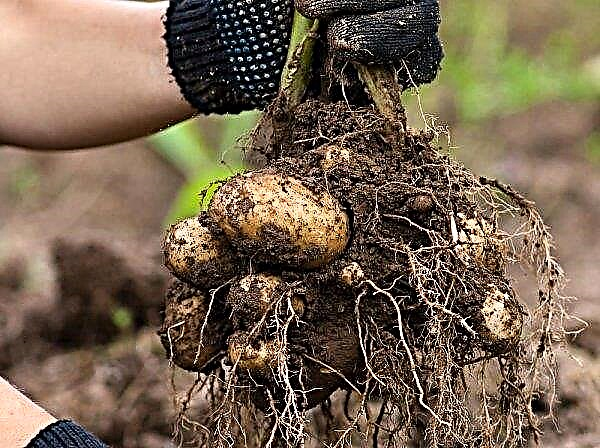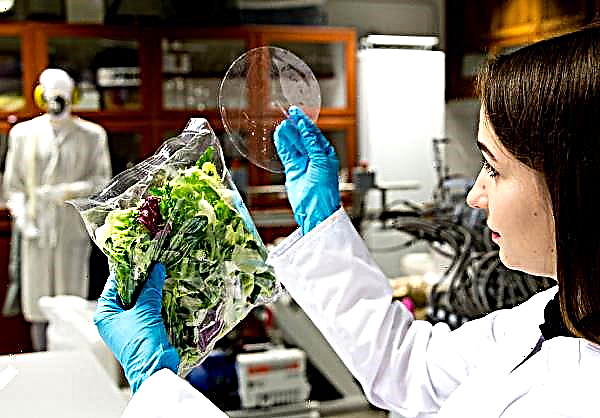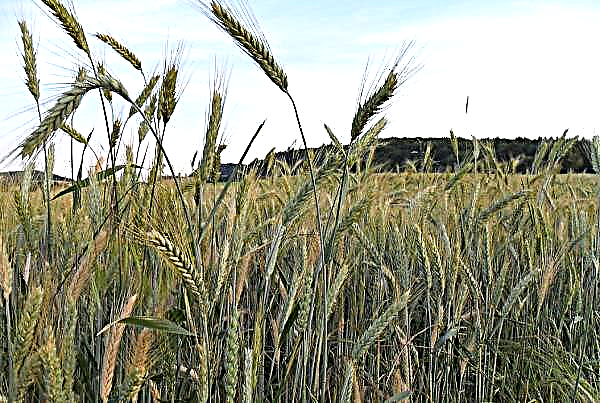From ancient times, Lebanese cedars were worth its weight in gold. Historical documents from the period of Ancient Egypt and Hellas indicate that their wood was used as currency, with emulsions and oils embalmed the dead, and with shredded sawdust they were protected from insects and pathogenic microbes. Today, the popularity of these powerful evergreen trees has not died out. However, the view became relict. In the wild, it is rarely seen in remote mountainous areas. What is a plant, where it is found in the natural environment, how to propagate and grow it on a personal plot - this will be discussed later.
Definition and botanical description of Lebanese cedar
These majestic evergreen representatives of the Pine family differ from other coniferous species with a flattened crown tip. The description of Lebanese cedars is in many ways similar to Atlas cedars.
But it is impossible to confuse them, since the former are characterized by:
- the location of the branches in one plane;
- clear structure of cones;
- a specific dark brown color of the upper edge of the scales on the fruit and a trihedral protrusion on it.
Did you know? Under cedars, there are never mosquitoes or ticks. These insects do not tolerate the volatiles released by the leaves of the culture.
The life expectancy of Lebanese cedars is measured for millennia. On average, it is about 2000-3000 years.
Trees grow slowly, in a favorable environment, their strong, not evenly branched trunks extend to a height of 40–50 m with a minimum diameter of 2.5 m. The conic crown is characteristic of young seedlings, and with age it is widely extended and acquires a highly flattened umbrella shape.
Lebanese cedar bark is distinguished by a dark gray color and scaly structure. At the age of 250 years, the tree looks like a strong giant with a multi-tiered structure of a dimensional crown without a sharp tip, with a diameter of up to 28 m, a trunk circumference of up to 5.5 m and a height of up to 27 m.
The wood is recognizable by its specific reddish color, pronounced coniferous aroma, extreme strength and lightness.. At one time, solar boats were made from it for the ancient Egyptian pharaohs, as well as Phoenician naval vessels.
The hard needles of the culture is updated every 3-4 years, has antiseptic properties. Depending on the species diversity, its color can vary from saturated green to smoky and bluish. Four-sided needles, up to 3.5 cm long, form dense bundles, gathering 30-40 pieces.
Did you know? Popular pine nuts are actually the fruits of pine cones. But the seeds of this cedar are unsuitable for consumption.
The fruiting phase occurs in trees after reaching the 30th anniversary. Then light brown cones of cylindrical shape appear on the branches. Their length reaches 12 cm, and the width is half as long. To the extent of ripening, small inedible resinous grains form in their scales, which ripen in the third year after pollination and spread around with the help of wind.
The culture is not demanding on soil conditions, tolerates short-term cold, can withstand temperature drops to -30 ° C. But prolonged frosts are detrimental to the heat-loving cedar. Optimally favorable for its development are sunlit and moderately humid areas at an altitude of 1300–2050 m above sea level.
It is characteristic that this relic culture has several subspecies that, depending on a number of biological differences, adapt to certain climatic and soil conditions. For example, Turkish cedar grows exclusively in the Taurus Mountains and southern Turkey, while Iranian cedar lives in the northwestern regions of Iran.
Video: Lebanese cedars
Lebanese cedar spread
In the wild, Lebanese cedars are found in mountainous areas of Northern Asia, Transcaucasia, Southern Europe, Syria, Morocco, Algeria, Turkey, as well as the Black Sea coast of Turkey, the Caucasus and the Crimean Peninsula, inaccessible to humans.
Of particular importance is the tree for Lebanon, being its national symbol. His image is on state kleinoda and currency. The highest award in the country is considered the National Order of the Cedar. In addition, the Lebanese created the Divine Cedar Forest, which entered the UNESCO World Heritage Site.

Where grows in Crimea
To preserve the population, relict trees are cultivated in botanical gardens and nurseries. In particular, in Crimea they can be seen on the territory that extends from Sevastopol to Kerch. In the southern regions of the Republic, culture is widely used to design park areas that are popular with tourists.
Important! Coniferous ornamental varieties, as a rule, are not prone to flowering and seed formation. Such specimens are propagated exclusively by cuttings, and in case of its inefficiency, they are given a graft on the mother sprout.
Especially attractive for travelers is a grove of Lebanese cedars in the Nikitsky Botanical Garden, which began to grow since 1824. Her bookmark was preceded by a titanic work, as the initiators of the idea needed to level a deep ravine that crossed the site planned for landing. Due to the lack of a good road from Alushta, the workers were forced to transport soil from there by sea. Tons of stuffed bags were lifted into the mountains on donkeys and their own shoulders, so that today and for many centuries, beautiful coniferous trees flaunted at this place.

Properties of Lebanese Cedar
In the distant past, cedar forest groves covered vast territories, but because of the value of wood, culture began to be destroyed. Mass deforestation soon led to a significant reduction in the species population.. As a result, the endangered Lebanese cedar fell into the International Red Book.
From ancient times, the plant was appreciated due to its medicinal properties.. Therefore, our ancestors, using coniferous raw materials from all diseases, considered culture a symbol of good health and longevity. Scientists have discovered vitamins, trace elements, and about 20 unique amino acids in plant fibers.
Important! To permanently get rid of moths, it is enough to put a small piece of Lebanese cedar wood in the house.
The chemical composition of cedars of this species fully explains its healing effect. Inhaling the aroma of a plant, a person cleanses his body from pathogenic bacteria.
- With the internal intake of the extract and Lebanese cedar oil, an even greater therapeutic result is felt:
- the work of the organs of vision improves;
- the activity of the nervous system is normalized;
- blood formula is being improved;
- rejuvenated skin;
- the reproductive system is restored;
- blood is cleansed of cholesterol and toxic substances;
- the walls of blood vessels are strengthened;
- at the DNA level, the body is restored.

Application of plant products
The above characteristics have caused widespread use of plants by the ancient population. For example:
- the Egyptians embalmed his dead pharaohs with his resin, warning them of decay;
- in many countries it was customary to build temples exclusively from this type of cedar wood (an example of such buildings is the Jerusalem Temple, the Temple of Diana in Ephesus, the Temple of Apollo in Greece, which are more than 2000 years old);
- The Phoenicians used raw materials for shipbuilding;
- ancient Greeks, Egyptians, Phoenicians, Jews, Arabs, Indians, Romans were treated with cedar needles, considering it the most powerful antiseptic;
- Syrians paid cedar wood for all imported goods;
- according to Pliny, his compatriots extracted oil from cedar logs to sanitize them with book scrolls and papyrus, as well as to continue their longevity;
- ancient Romans from the highest circles of society used cosmetics based on Lebanese cedar oil, while citizens with more modest incomes used dust shavings and fine sawdust for health purposes;
- contemporaries make medical preparations, cosmetics, and also disinfectants on the basis of Lebanese cedar raw materials;
- cedar wood is still valued in the carpentry.

Lebanese cedar breeding methods
Unit growing an endangered species today is one of the most effective ways to save it. Culture tends to self-propagate. But to restore its former population requires large groves of parental landings and a long period. Indeed, in adverse conditions, the seeds can wait for decades for the heat and moisture to germinate.
In the infield, a plant can propagate only by seed and vegetative methods.
Did you know? Since the emergence of civilization, humanity has lost 16 species of cedars, only 4 left.
Seed cultivation
To get seed from a young seedling, you have to wait 30–40 years. Cultivated trees begin to bear fruit a little earlier. In addition, there is no guarantee that the seeds will germinate safely. Therefore, the method is used extremely rarely.
Cedar fruits ripen in the fall. Their landing should be planned for the end of April - beginning of May, when the earth warms up well and the daytime temperature reaches stable + 15 ° С.
Video: Growing Cedar from Nuts
The process of seed propagation is carried out according to the algorithm below:
- For planting, it is preferable to choose high-quality grains. At home, their germination is checked by placing all planting material in water at room temperature. The procedure must be done 3 months before the planned landing. After 3 days, specimens suitable for germination will swell and settle to the bottom, and empty specimens will rise up. Keep in mind that purchased seeds are characterized by low germination. Therefore, be sure to check with the sellers for the availability of the necessary certificates for the goods. It will be a guarantee of the quality and suitability of your purchase.

- Selected grains are subject to mandatory disinfection and stratification.. To this end, they are treated with a weak solution of potassium permanganate, dried and placed a tissue bag with moist fertile soil or a mixture of sand and sawdust (in a ratio of 1: 3). After that they send for 90 days to the refrigerator or a dark basement. In such conditions, nuts should shoot. This may take 2-3 years. Unprepared seeds will be vulnerable to open ground conditions and may not germinate.

- Then, the sprouted planting material is sown in the traditional way in wooden boxes. It is important that the nuts are sufficiently submerged in the ground. During this period, cedars require abundant moisture, light and heat. Therefore, it is recommended to tie the container with polyethylene, and water its contents regularly. The seedlings will be in this state for the next 2-3 years.

- After the specified time, when the sprouts slightly rise and get stronger, they need to be tempered. To do this, remove the shelter and put the plants on the street at the hours following the highest solar activity. The residence time of the cultivated culture in vivo is increased daily.
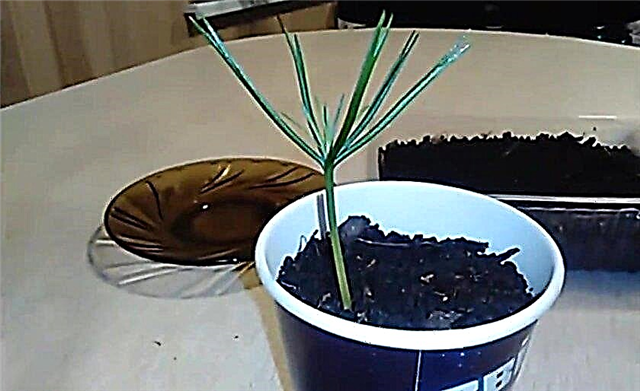
- Only now can plants be transplanted to a permanent place. For this, in advance prepare landing holes, the depth of which should correspond to the size of the root system of shoots. Their bottom is drained and covered with a topsoil by a third, and then covered with a black film to form the necessary microclimate for growth. After a few weeks, the shelter is removed from the pit, it is abundantly watered and the prepared seedlings are rooted in the traditional way. In the first month, young seedlings will need plenty of moisture, so do not forget to water them.
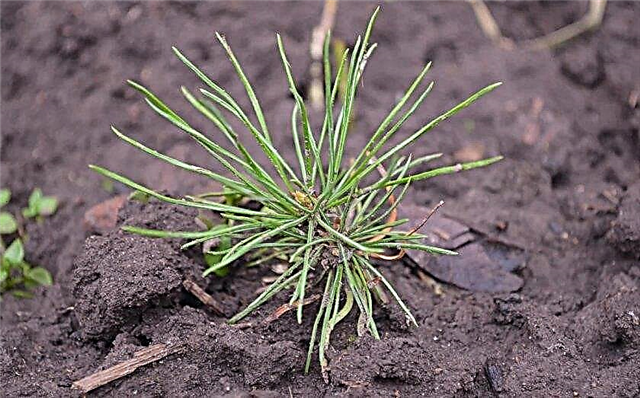
Cuttings
Many gardeners prefer to propagate relict culture using cuttings, since the method can significantly accelerate the development of seedlings. In addition, the chances of engraftment of planting material are much higher than in the previous method.
Did you know? In a wooden dish made of cedar wood, milk does not turn sour for a very long time.
To grow a young tree, you must:
- At the peak of the vegetation of the mother plant, choose the strongest shoots with healthy needles and bark.
- With a sharp tool, with a sharp movement, separate their apical parts. The optimal length of planting material should be at least 12 cm.
- Clear the bottom of the cuttings from needles.
- Place prepared samples for 24 hours in water diluted with any growth stimulant. Often, Ecosil, Emistim, and Kornevin are used for such purposes.
- In the meantime, it is important to prepare the planting pot, disinfecting it with a weak solution of potassium permanganate and filling it with moist river sand.
- The prepared cuttings are deepened in a moist substrate at an angle of 45 ° and left in a well-lit, warm place for germination. For the proper development of the root system of the future tree, it is important to monitor the level of soil moisture daily.
Video: Propagation of conifers by cuttings
How to plant a seedling
When buying an already grown seedling, instances with a closed root system are preferred. They are less damaged when rooted in a permanent place. If you have to deal with a dug plant, carefully examine the condition of the root processes and check their freshness. According to experts, cedars aged 6–8 years are characterized by better survival.
Important! For purchased Lebanese cedar seedlings with a height of 1.5–2 m and a crown diameter of at least 40 cm, it is important that the rhizome covers an earthen lump. For transportation, it is advisable to pack it in a moist burlap and place it in a plastic bag.
Before planting, it is important to determine the place, as well as prepare it and a seedling. About all this in order.
Seat selection
All Pine are photophilous and react poorly to excess moisture. Young plants tolerate shade well, however after reaching the age of 16 they require more light. Therefore, it is preferable to plant Lebanese cedar seedlings in a well-lit area with a light fertile loamy substrate. Sandy terrain is also acceptable, but in such conditions the tree will need frequent irrigation, and in winter the risks of freezing the roots are great.

It is important that in the selected place the underground currents lie deep (no closer than 2.5 m to the soil surface). This factor will protect the surface root system from decay and fungal infections. It is also desirable that the tree is not affected by northerly winds, drafts, cold air (often collected in the lowlands), and the accumulation of melt and rainwater.
Soil preparation
Sapling will take root faster on loose and nutrient-rich soil. Therefore, at least 4 weeks before the planned planting, it is advisable to dig a plot to the depth of the shovel bayonet and to add any organic fertilizers (humus, compost).
After the manipulations, dig a landing hole, the depth of which should correspond to the size of the root system. She should not constrain them and be excessively spacious. Experienced gardeners in the preparation of the recess advise making it 30% larger than an earthen lump on the rhizome of a seedling.
Fill the bottom of the well with a layer:
- expanded clay (for drainage of the soil);
- fertile soil (up to 15 cm thick);
- humus or compost (3 buckets);
- coniferous forest land (2-3 handfuls);
- wood ash (1 handful);
- complex fertilizers for conifers, for example, Plantafol, Yara Vila (according to the manufacturer's recommendations).
 If you are planting one tree, make sure that the soil is dug up and fertilized within a radius of 2 m from the landing pit
If you are planting one tree, make sure that the soil is dug up and fertilized within a radius of 2 m from the landing pit
All layers in the pit must be manually tamped every 15 cm.. Otherwise, when planting, the root neck of the cedar may be exposed. When the necessary substances are used, carefully mix the contents of the hole with a shovel, cover it with black polyethylene and leave it for 3-4 weeks to form favorable microflora.
After the specified time, the shelter can be removed and proceed to the direct rooting of the seedling.
Important! When planting Lebanese cedars, observe a distance between adjacent trees of 8 m. Dwarf varieties can be placed at a distance of 3 m.
Landing algorithm
At the preparatory stage, a pit dug for landing can settle. In this case, it is necessary to resume its shape and size, if necessary, top up the fertile substrate. 20 cm should remain at the top of the recess.
Further actions are carried out according to this algorithm:
- Drive a wooden peg into the center of the hole to fix a young trunk to it. To prevent rotting of the roots, it is advisable to pre-burn the edge of foreign wood and treat it with a weak solution of potassium permanganate.
- If the root root is damaged, it will need to be truncated and disinfected. It is advisable to stand the seedling for several hours in the growth stimulator solution before planting. Then its rhizome is saturated with moisture and substances necessary for development.
- Carefully, so as not to damage the lower part of the seedling, place it next to the peg, spreading the root shoot. The transition point of the rhizome into the trunk should be at ground level. If it is buried in the hole, be sure to add soil to the desired level.
- Secure the tree trunk to the support with a string.
- Fill the voids near the roots with fertile soil mixture and condense.
- Pour abundantly planted cedar. At least 6 l of settled water at room temperature should be used per plant.
- Mulch the trunk circle with fallen needles, sawdust or bark.

Care
The scrupulous choice of a seedling and its competent planting does not guarantee the correct development of a tree. If you do not create favorable conditions for him, there is little chance that a thin sprout will ever turn into an evergreen strong giant. Regular care is important for this.
Did you know? The Lebanese cedar was saved from complete disappearance by the Maronite patriarchs Bsharre, who took custody of a small grove located high in the mountains. Today in Lebanon this is the oldest and most beautiful cedar planting.
Watering and feeding

Cedars do not like excessive waterlogging of the soil and tolerate drought well in adulthood. Young plants need to be given special attention, in particular in the first 2 weeks after planting. During this period, provided there is no rain, it is recommended to water the seedlings every 2-3 days, pouring 5-6 liters of water under each trunk.
When growing ornamental varieties, do not allow the soil to dry out in tree-trunk circles. It should be moderately moist. To prevent moisture from weathering and facilitate tree care, mulch the planting area.. Do not forget to periodically loosen it. This will improve the aeration of the roots and contribute to their growth.
Favorably affects the culture of periodic irrigation of the crown. The procedure is relevant only during a period of prolonged drought. Held in the morning or evening.
Trimming and Shaping
If desired, an evergreen culture can be turned into any figure. However, cedars do not like gross interference in their structure. Illiterate pruning will only harm them.
Important! Digging under Lebanese cedar is strictly prohibited. Due to the nature of its root system, only superficial light loosening is allowed.
To prevent this from happening, adhere to the following rules:
- You can not cut young seedlings. At the initial stages of development, they have a pyramidal decorative shape, which does not require additional formation.
- The first pruning is relevant for plants on which dry, old and disease-damaged branches began to appear. For mature specimens, such sanitary cleaning is required every year.
- When forming a crown piece, never remove large and thick branches. This can disrupt the growth of the tree. Moreover, such wounds heal long and poorly.
- To limit the growth of unnecessary shoots, carefully pinch their tops.
- If the growth of certain branches seems wrong to you, do not rush to get rid of them. First, try to bend the shoot and fix it in this position, giving it the desired direction.
Video: Basic rules for pruning conifers
Proper wintering
The Lebanese species is characterized by high winter hardiness. However, low temperatures are considered unfavorable for its full development.
Old trees can endure not only cold, but also severe short-term frosts without loss. And here young trees require additional preparation for wintering. It consists in shelter with burlap, spandex or agrofibre. The procedure is relevant only in regions where the thermometer column often drops below -10 ° C. In areas with warm winters you can do without wrapping the crown.

Keep in mind that a loose loose cedar crown often loses its shape in winter due to snow sticking to a branch. This can be prevented by tying young plants with twine. For more mature specimens, such actions lose their meaning due to the giant diameter of the crown and the height of the trunk.
Diseases and pests of Lebanese cedar
Due to the intensely released phytoncides and oily substances, the specific aroma of Lebanese cedar scares away most insects. However, in nature, there are parasitic creatures that like to eat the juice of young needles.
Also learn about the diseases and pests of conifers such as fir, spruce and pine.
Therefore, trees can be attacked:
- ticks;
- aphids;
- spruce false shields;
- pine hermes;
- caterpillars
- teardrops;
- pine scoop;
- moths.
It is characteristic that obvious signs of damage to wood tissue are evident only with massive colonies of parasites. Then the trees can prematurely lose needles, are lifeless and underdeveloped.

You can save the situation with the help of systemic insecticides. For instance:
- Arrivo
- "Creocide Pro";
- Inta-Vir;
- "Actellicus";
- "Aktara";
- "Fufanon";
- Novaktion;
- Vermitex.
At the initial stages of the lesion, you can resort to processing the crown with biological substances (Lepidobactocide, Bitoxibacillin, Lepidocide, Fitoverm), as well as manually collect pests.
Among diseases of the Pine family threatens cedar root rot, rust.
The gardener should be alert:
- early fall of needles;
- unexplained loss of her color;
- the appearance of a specific coating on the needles;
- withering and lifelessness.
It is important not to start the disease. If alarming symptoms are detected, fungicides will come to the rescue (Fundazol, Topsin-M, Bordeaux mixture, Abiga-Peak). It is necessary to use them, strictly observing the recommendations of the manufacturers.
 Remember that it is easier to prevent a disease than to cure it. Therefore, periodically inspect your landing for signs of vital activity of pests and coniferous diseases. Keep track of soil moisture and follow basic agricultural practices for crop care
Remember that it is easier to prevent a disease than to cure it. Therefore, periodically inspect your landing for signs of vital activity of pests and coniferous diseases. Keep track of soil moisture and follow basic agricultural practices for crop care
Lebanese cedar is distinguished by its durability, decorativeness and useful qualities. Undoubtedly, the relict culture will decorate any corner in the garden or park. However, getting an evergreen luxurious backdrop will take time and a lot of effort. Be prepared for this.






